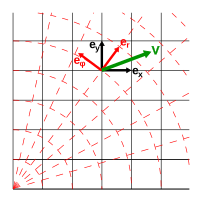
Photo from wikipedia
This study developed principal component analysis and radial basis function neural networks (PCA-RBFNNs) for predicting freshness in tilapia fillets stored at different temperatures by integrating an electronic nose and electronic… Click to show full abstract
This study developed principal component analysis and radial basis function neural networks (PCA-RBFNNs) for predicting freshness in tilapia fillets stored at different temperatures by integrating an electronic nose and electronic tongue. Total volatile basic nitrogen (TVB-N), total aerobic counts (TAC), and K value increased at 0, 4, 7, and 10 °C, while sensory scores decreased significantly. The electronic nose and tongue acquired the volatiles and dissolved chemical compounds in the stored samples. Gas chromatography-mass spectrometry (GC-MS) verified the changes in gas species and contents in fillets stored for different periods of time at different temperatures. PCA-RBFNNs based on data fusion were developed and presented good performance for prediction of TVB-N, TAC, K value, and sensory score in tilapia fillets. The established PCA-RBFNNs based on feature variables of the electronic nose and tongue is a promising method to predict changes in the freshness of fillets stored from 0 to 10 °C in the cold chain.
Journal Title: Food and Bioprocess Technology
Year Published: 2018
Link to full text (if available)
Share on Social Media: Sign Up to like & get
recommendations!